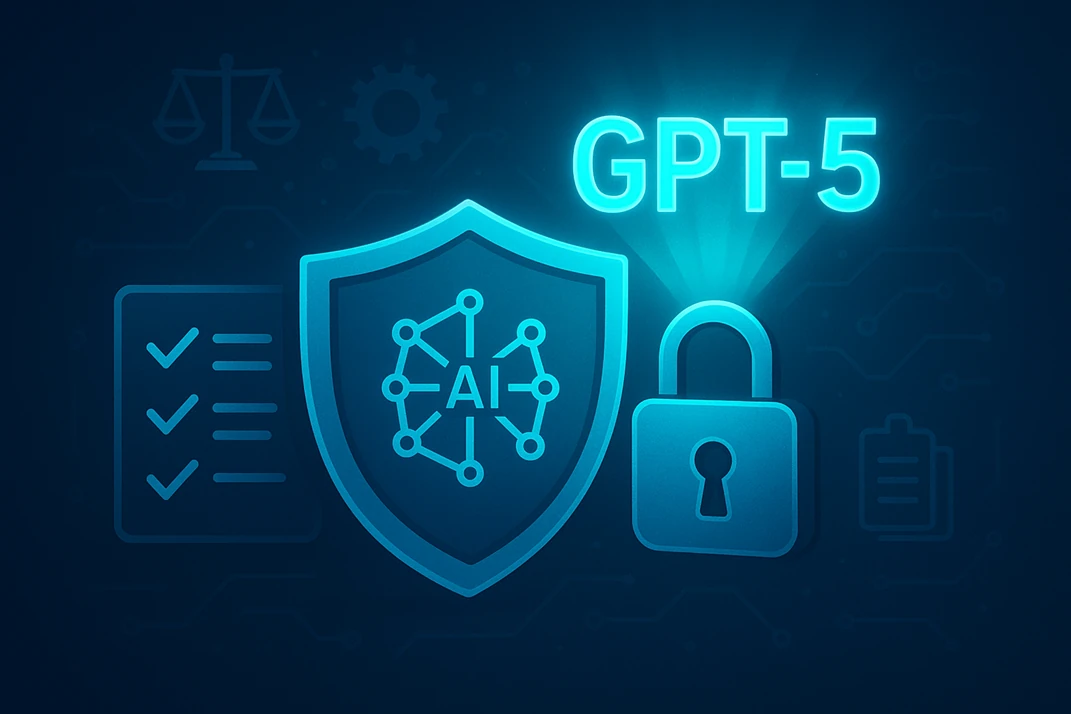GPT‑5 Safety, Compliance & Enterprise AI Governance Guide
Estimated reading time: 18 minutes
Table of Contents
- Introduction: Why GPT‑5 Safety and Compliance Matter
- GPT‑5 Safety Controls & “Safe Completions”
- AI Governance & Compliance Mapping (GDPR, APPs, DPIA)
- Data Governance: Retention, Deletion, Minimisation
- Prompt, Model & Audit Governance
- Capacity Planning and Token Budgets in GPT‑5
- Cost Governance: FinOps for GPT‑5 in Enterprise
- RACI, Policies, and Enterprise Governance
- Security Controls & Incident Response
- Bias Mitigation & Evaluation
- Change Management and Responsible Rollouts
- AI Procurement: SLAs, Contracts, and Liability
- 90-Day Pilot Plan for Safe GPT‑5 Rollout
- GPT‑5 Safety, Compliance & Enterprise AI FAQ
- Need AI Governance Help? Lyfe AI Domain-Ready Models
- Conclusion: Practical, Responsible AI Deployment
Introduction: Why GPT‑5 Safety and Compliance Matter
As GPT‑5 becomes the core of AI-powered assistants, automations, and workplace solutions, GPT‑5 safety and compliance are more critical than ever. Enterprises and startups alike need to deploy models with robust risk management, compliance, and audit readiness. Getting this right means fewer surprises and more sustainable innovation.
GPT‑5 Safety Controls & “Safe Completions”
- Safe completions: The model redirects potentially unsafe or policy-violating prompts instead of blunt refusals.
- Content filters: Thresholds for hate, harmful, or illegal content, with logging for edge cases.
- Human-in-the-loop: Manual review and appeals path for sensitive requests (medical, legal, ethical).
- Evaluation & red-teaming: Real scenarios for testing policy bypass, bias and harmful advice are essential in your review process.
AI Governance & Compliance Mapping (GDPR, APPs, DPIA)
- Lawful basis: Clarify consent, contract, or legitimate interest for user data/outputs.
- Transparency: Up-to-date privacy notices, covering GPT‑5 use and ID verification steps.
- DPIA/PIA: Complete for any high-risk use – e.g., biometrics, major automations, profiling.
- Vendor DPA: Demand data processing addenda with clear roles, purpose limitation, deletion rights.
- Sector overlays: Health, education, finance require extra controls—build on top of base compliance.
Data Governance: Retention, Deletion, Minimisation
- Store only prompts, outputs, logs strictly needed for your purpose and time window.
- Enable user-initiated deletion and follow robust schedules for purging logs/backups.
- Remove or replace identifiers (“data minimisation”)—use pseudonymisation whenever possible.
- Control log and prompt access using role-based security and periodic reviews.
Prompt, Model & Audit Governance
- Model pinning: Manage versioning for models and key prompts.
- Audit trails: Track all significant prompt or configuration changes; time-stamp and record authorship.
- Set acceptance gates—models only ship to production after passing quality/safety evals.
Capacity Planning and Token Budgets in GPT‑5
- Assign per-user, per-team, or per-process token quotas.
- Route simpler tasks to faster/lighter models; “think”/complex queries to full-capacity GPT‑5.
- Chunk up large docs—auto-summarise to fit context windows efficiently.
- Gracefully degrade if rate limits are hit (load shedding).
Cost Governance: FinOps for GPT‑5 in Enterprise
- Set budgets, monitor spend, and alert on overruns (integration with billing panels).
- Tag AI calls for product, feature, user, and environment to drive chargebacks or forecast spend.
- Test with lighter models/features in dev; reserve “think” modes for production workflows.
- Review pricing terms and discounts regularly, and benchmark across top vendors.
RACI, Policies, and Enterprise Governance
- RACI matrix: Map who’s Responsible, Accountable, Consulted, Informed for AI safety, compliance, incident response.
- Acceptable Use Policy & Secure Prompting Guidelines: Codify what is permitted, how to prompt safely, and non-permissible uses.
- Training: Tailor learning for developers, support, product, and compliance staff.
Security Controls & Incident Response
- Secrets: Use a secrets vault; always rotate API keys and credentials.
- Networking: Deploy models via VPC peering/private links, restricting public access.
- Monitoring: Alert for anomalous usage, failed requests, model errors.
- Vendor risk: Regular reviews and sub-processor list updates. Require SOC 2/ISO 27001.
Bias Mitigation & Evaluation
- Maintain diverse test sets reflecting real user edge cases.
- Periodically scan for demographic bias or unfair outcomes.
- Log rationale and allow human override for model decisions.
- Feed corrections and appeal outcomes back into model improvement.
Change Management and Responsible Rollouts
- Staged rollout—internal to pilot, to GA—with carefully monitored feature flags.
- Transparent user communications describing model changes and their impact.
- One-click feedback/reporting from users for output issues or policy blocks.
AI Procurement: SLAs, Contracts, and Liability
- Demand SLAs for uptime, latency, response times, and breach response.
- Ensure DPAs/Contracts prevent your data from being used for training or ads without express opt-in.
- Negotiate incident liability and regulatory compliance terms specifically for AI workloads and data.
90-Day Pilot Plan for Safe GPT‑5 Rollout
- Weeks 1-3: Establish governance team, define RACI, run DPIA/PIA for key workflows.
- Weeks 4-7: Build abstraction for fast/think model routing, set budgets, tag usage, test logging.
- Weeks 8-13: Pilot with select users, track KPIs, feedback loop with red-teaming and usability.
- Review and expand: Go/no-go, refine, document lessons learned for a broader rollout.
GPT‑5 Safety, Compliance & Enterprise AI FAQ
How do I ensure GPT‑5 outputs remain safe?
What is a DPIA and why is it critical for AI deployments?
How can FinOps be applied to control GPT‑5 AI spend?
What security certifications should I require from AI vendors?
How do I evaluate and mitigate model bias?
What policies should enterprises create for GPT‑5?
When should rollouts for new GPT‑5 features go live?
Can I limit AI training on my enterprise data?
What is human-in-the-loop review and when is it essential?
How do I manage regulatory risk across regions?
Need AI Governance Help? Lyfe AI Domain-Ready Models
Lyfe AI offers enterprise-ready, domain-specific AI models with compliance, governance frameworks, and expert integration for GPT‑5. For tailored controls, audits, or rollouts, email human@lyfeai.com.au. Subscription management: https://dashboard.stripe.com/login.
Conclusion: Practical, Responsible AI Deployment
Every business deploying GPT‑5 must prioritise safety, compliance, and solid enterprise governance. Follow these steps for safer, auditable, and future-proof AI. If you need a framework, contacts, or ready-built control maps—Lyfe AI is here to help.



